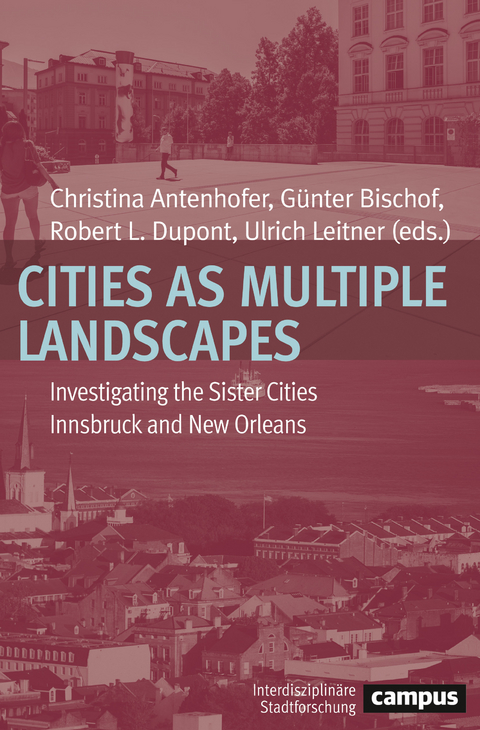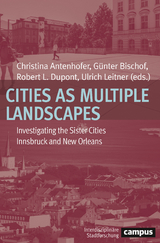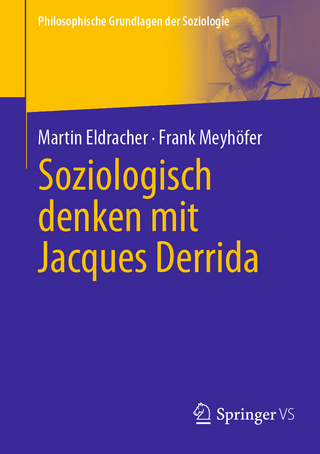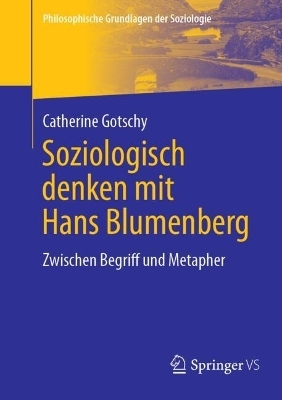Cities as Multiple Landscapes
Christina Antenhofer ist assoziierte Professorin für Geschichte des Mittelalters an der Universität Innsbruck. Günter Bischof ist Marshall-Plan-Professor für Geschichte an der University of New Orleans. Robert L. Dupont, assoziierter Professor, leitet dort das Department of History. Ulrich Leitner, Dr. phil., ist Universitätsassistent am Institut für Erziehungswissenschaft der Universität Innsbruck.
Contents
Introduction
Cities and Landscapes: Comparing Innsbruck and New Orleans 11
Christina Antenhofer, Robert L. Dupont
I Multiple Landscapes
Poetic Places and Multiple Landscapes: Exploring Urban Topographies35
Christina Antenhofer, Ulrich Leitner
University Cities: A Strategic Resource of Small and Medium-Sized Cities in Europe61
Gastone Ave
Interaction between Cities and Universities: Innsbruck Univer©ity83
Tilmann D. Märk, Thomas Baumgartner
Human Bodies and the City: Art as a Medium to Explore Urban Landscapes97
Ulrich Leitner
II Historical Readings
The Mysteries of New Orleans: Culture Formation and the Layering of History107
Berndt Ostendorf
Between Land and Water 121
Robert L. Dupont
An Architectural Geography of New Orleans' French Quarter 133
Richard Campanella
Innsbruck as an Historical City 167
Julia Hörmann-Thurn und Taxis
III Material Realities
Obscuring Risk: The Levee Landscape of New Orleans187
Craig E. Colten
Higher Ground: Land Loss, Infrastructured Landscapes, and Human Habitats 217
Stefano de Martino, Gerald Haselwanter
Innsbruck as Olympic City 237
Arnold Klotz, Wolfgang Meixner
Bicycling in Urban Landscape: Exploring Discursive, Cultural and Spatial Dynamics 251
Philipp K. Wegerer
IV Atmospheres
The (Felt) Body of the City: Feeling Urban Spaces277
Jürgen Hasse
Matchpoint Innsbruck 295
Bart Lootsma
Capital of the Alps: Mountains as Innsbruck's Landscape of Taste325
Simone Egger
Not Commodified Enough: An Anthropological Case Study about Music in New Orleans 347
Bernhard Bauer
V Micro-Landscapes
Restructuring Public Landscapes in Gentrifying New Orleans 371
Renia Ehrenfeucht
Ultra Soccer Fans and the Cultural Logic of Symbolic Gift Exchange: Ethnographic Encounters in the Micro-Landscape of Soccer Fans 391
Jochen Bonz
From the Bayou to the Table: The Croatian Community of Southeastern Louisiana and their Role in Louisiana's
Seafood Industry 401
Reneé Bourgogne
schaug-Shifting Perspectives on Linguistic Landscapes: Implications for Language Learners 417
Dominik Unterthiner, Alexander Topf, Stephanie Baur
VI Hidden Sides
Essential but Invisible: Migration as Part of Urban and General History 441
Dirk Rupnow
Saving the City from Sex Deviates: Preservationists, Homosexuals and Reformers in the French Quarter, 1950-1962 459
Alecia P. Long
Landscapes of Psychiatry in the Tyrol in the Nineteenth Century with a Comparative View of Louisiana 471
Maria Heidegger
Dangerous Spaces-Endangered Youth: Considering Urban Space as a Relevant Dimension in Researching the History of Residential Care in Post-War Innsbruck 495
Flavia Guerrini
Notes on Authors 513
Index 515
Cities and Landscapes: Comparing Innsbruck and New Orleans
Christina Antenhofer, Robert L. Dupont
How should it be possible to compare two such different cities as Innsbruck and New Orleans? And why should one even want to compare these cities which at first glance do not have much in common? New Orleans, the Big Easy, the Crescent City, famous for its jazz, home to 389,617 people, surrounded by spectacular wetlands, is characterized by a tropical climate and its struggle against hurricanes. The city is strongly marked by its river, the Mississippi, and its historical neighborhoods such as the Vieux Carré and the Garden District, which make it a favored site for shooting movies and experiencing historic architectural sites of the 18th and 19th centuries. Most tourists, however, enjoy the city because of its many festivals and bars, which make it a unique place to party and enjoy live music. Innsbruck, on the other hand, is a lot smaller with 132,048 inhabitants. Situated in the center of the Alps, it is famous for having hosted the Olympic Games twice and appreciated for its historical atmosphere where its short period as an imperial city under Emperor Maximilian I left its traces in the Old Town and its surroundings, thus making Innsbruck one of the most interesting places to study the German Late Middle Ages and Renaissance. Yet most tourists now know Innsbruck as place for winter sports and its Christmas market, reflected by the Swarovski crystals which are certainly its most cherished souvenir. To this fairly associative list, one could add other aspects of these cities such as the fantastic cuisines which both New Orleans and Innsbruck are famous for. Both cities have strong local and regional identities. Both have long histories of being centers of multicultural exchange. Both cities profit from their spectacular landscapes and geographical situations. In particular, their geographical locations situate them within environmental and technological as well as security challenges that need to be combined with aesthetical (cultural heritage) and ecological debates. However, the main justification for focusing on these two cities as case studies and dedicating this volume to them is that this comparison is based not only on first impressions but also on longer lived experiences. For more than 40 years now the stories of the two cities have become intensely intertwined because of the International Summer School the University of New Orleans first started to organize in Innsbruck in 1976. Altogether, almost 10,000 students, 454 professors and 62 staff have spent six summer weeks in Innsbruck over the years.
Every summer 250 to 300 students from various universities in the American South have been hosted in Innsbruck and attended classes at the University of Innsbruck. Every year, when regular Innsbruck students leave their university and most often also the city for their summer holidays, they are replaced by crowds of young Americans who change the entire atmosphere in the city. In reference to this volume's title, one might say these American visitors create new landscapes of their own. They alter the image of the city, visibly bringing their own dressing styles to Innsbruck, an experience most intensely felt in the 1990s and 2000s when most young Europeans still preferred jeans to the visiting Southern girls wearing their light summer dresses and high heels, rarely seen before in the otherwise sporty Alpine city. Hearing American English all over the streets of Innsbruck adds to a new linguistic landscape. What began as individual experience grew into a collective one with students recommending their Innsbruck paths and even writing special travel guides for students spending their summer in the Alpine town. To reference Susanne Rau, thus real topographies came into being, written parcours on how to walk around the city and which places to visit. The places they frequent are not necessarily the ones tourists o
| Erscheinungsdatum | 10.10.2016 |
|---|---|
| Reihe/Serie | Interdisziplinäre Stadtforschung ; 21 |
| Co-Autor | Christina Antenhofer, Gastone Ave, Bernhard Bauer, Stephanie Baur, Günter Bischof, Jochen Bonz, Reneé Bourgogne, Richard Campanella, Craig Colten, Robert L. DuPont, Simone Egger, Renia Ehrenfeucht, Flavia Guerrini, Gerald Haselwanter, Jürgen Hasse, Maria Heidegger, Julia Hörmann-Thurn und Taxis, Alecia P. Long, Bart Lootsma, Tilmann Märk, Stefano De Martino, Wolfgang Meixner, Berndt Ostendorf, Dirk Rupnow, Alexander Topf, Dominik Unterthiner, Philipp K. Wegerer, Arnold Klotz |
| Zusatzinfo | ca. 80 Abbildungen, teils farbig |
| Verlagsort | Frankfurt |
| Sprache | englisch |
| Maße | 143 x 214 mm |
| Gewicht | 674 g |
| Themenwelt | Sozialwissenschaften ► Soziologie ► Allgemeine Soziologie |
| Sozialwissenschaften ► Soziologie ► Spezielle Soziologien | |
| Schlagworte | Innsbruck • material culture • New Orleans • Soziologie • Spacial turn • Städtevergleich • Stadtforschung • Stadt u. Regionalsoziologie • urban studies |
| ISBN-10 | 3-593-50647-5 / 3593506475 |
| ISBN-13 | 978-3-593-50647-0 / 9783593506470 |
| Zustand | Neuware |
| Informationen gemäß Produktsicherheitsverordnung (GPSR) | |
| Haben Sie eine Frage zum Produkt? |
aus dem Bereich




